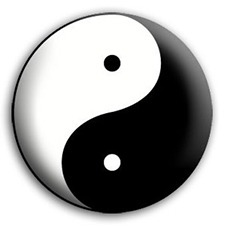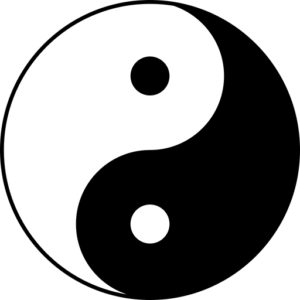Slanted FlyingJournal of Tai Chi Chuan
Training
Natural Diaphragmatic Breathing And Reverse Breathing In Taijiquan
Coordinating the breathing with one’s movements is analogous to breathing while swimming on the surface of the water. One’s in-breath coordinates efficiently with a certain place in the swimming stroke, and this varies with the particular stroke (e.g., crawl, butterfly or breaststroke). It can also depend on if one wants to breath at the same place in every stroke, or alternate sides in order to see competitors to both the right and left, or hold the breath coming into the wall, etc. The different breathing patterns used for swimming strokes could be analogous to the differing breathing coordination used with different styles/forms of Taijiquan.
The breathing rhythm when swimming can also depend on whether one is sprinting or competing in distance events. The breathing rhythm for Taijiquan would also depend on the speed that one is practicing at, whether one is doing solo form slowly for health, or if one is engaged in cooperative partner training or fighting. Different styles of Taijiquan can have different rhythms from each other, and therefore different timings for the breathing. For example, Chen (陳) style fajin (發勁 emitting trained power) movements will have sharper and quicker exhales than when a constant slower speed is maintained as is common in Yang (楊) style.
In general in Taijiquan, practitioners should breathe out when expressing outward energy or applications, and breathe in when collecting or energetically drawing in. But this can vary in different styles. For example, Sun (孫) style breaths in during the expanding portion of the open/close (開合 kai he) qigong movement inserted into the form (when the palms are facing each other in front of the chest), and breathe out when condensing, which follows a breathing pattern, often used in qigong, of breathing in when expanding (like a balloon filling with air) and exhaling when relaxing (like a balloon releasing air).
Reverse breathing is often utilized when using explosive issuing moves like for fajin, during interactive practice and fighting. To me it is the same breathing mechanism that some other martial arts use when they kiai (気合) which is a short shout when attacking. The kiai shout is used to teach a student the proper way to breathe during a strike in order to produce an extra burst of energy to make the strike more powerful. But since Taijiquan typically holds more in reserve than more “external” styles of martial arts, we do not yell.
Reverse breathing is also what is used during more extended issuing of force like when lifting a heavy weight, or pushing a car uphill. It is therefore a type of breathing that is produced naturally when exerting a strong force. One can observe this reverse breathing by merely simulating a cough or a sneeze, belly laughter or a yell, or when performing a more drawn out movement like lifting or pushing something heavy.
Practitioners should notice how the upper abdomen still goes inward because air is still being expelled from the lungs, but the actions of the lower abdomen changes from what happens during normal relaxed diaphragmatic breathing. The lower abdomen does not so much bulge forward as it does expand outward in all directions, like an inflating tube encircling the lower abdomen. These actions of the upper and lower abdomen (extending around the body and capable of being felt around the kidneys at the back) can consciously be performed during Taijiquan practice, even during slow solo forms.
Whether one is practicing their form at a constant slow pace, or have changes is pace by including explosive fajin movements, one can practice consciously using reverse breathing for any movement that would be issuing a strong force against the imaginary opponent. Practitioners who use fajin in their forms will likely already naturally utilize reverse breathing for those movements, but in situations that are below the level of effort where the body would naturally switch to reverse breathing, practitioners can still add the energetic boost by using conscious control to activate the reverse breathing dynamic. No shouting is necessary to trigger the use of reverse breathing – it can be done silently and with a calmer and more relaxed body.
In Taijiquan we want to be able to remain relaxed (but not collapsed or limp or weak) when expressing power, and the practice of reverse breathing can provide the energetic boost that “external” styles gain when they yell kiai, but without us using the tension that usually accompanies yelling (however brief). We want to avoid tensing up the breath into the chest when striking, and reverse breathing can help us to avoid this problem.
Consciously training reverse breathing when executing form postures where strong power would be used against an opponent also helps practitioners to avoid holding their breath during these actions (especially when the postures are being used during sparring or fighting). We want to avoid both holding the breath and using tensed chest breathing. Tension, which is a type of work by the muscles, depletes oxygen. Taijiquan’s approach, which emphasizes relaxation, reduces the “oxygen cost” of physical actions; but reverse breathing allows us to not miss out on the energetic boost that supplements our power, even when operating at sub-maximal effort levels.
I am unaware of any clear or authoritative explanation of the mechanisms underlying reverse breathing, so the following is highly speculative and my current best guess.
In weightlifting it is thought that the muscles of the spinal column can only support around 50 Kg of weight, but it is possible to lift 250 Kg above the head. It is likely that their belt, as well as the breathing, which typically includes yelling, helps to transfer the load from the muscles to the fascia. The viscoelastic fascia then provides a stable structure that supports movements elsewhere, like in the legs and arms. The stretched and stiffened fascia system reduces the muscular demands and produces core stability.
There are other factors that aid in using the fascia, like the lengthening of the spine which reduces the curvature in the lumbar region, spreading the scapula (a “bear’s back”), and the gentle lifting of the pelvic floor (perineum or huiyin xue 会阴穴 “meeting of yin” acupuncture point).
Those who practice Taijiquan as a martial art will probably find the above information sufficient. Those who practice Taijiquan as a type of qigong exercise will likely need the instruction and supervision of a qualified instructor and should not rely on learning from information found on a web site or in a book. As long as one practices in an unforced and gentle manner, they will likely have no adverse issues, but practicing a more intense qigong version could potentially pose some amount of risk.













